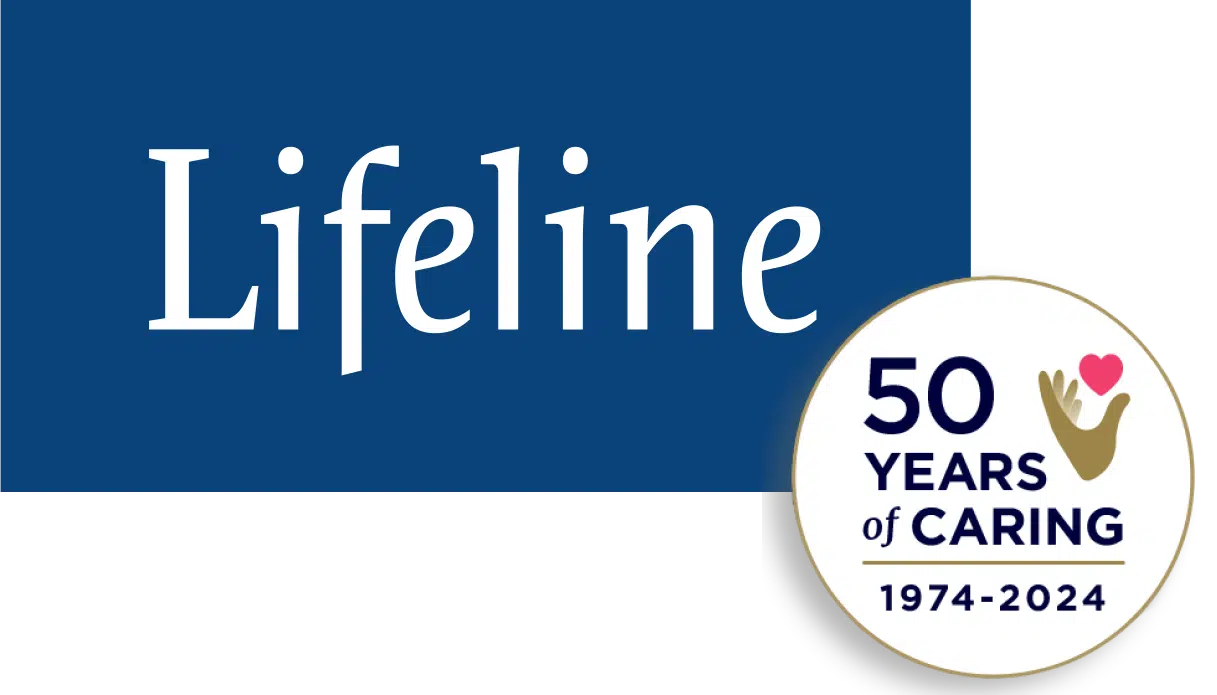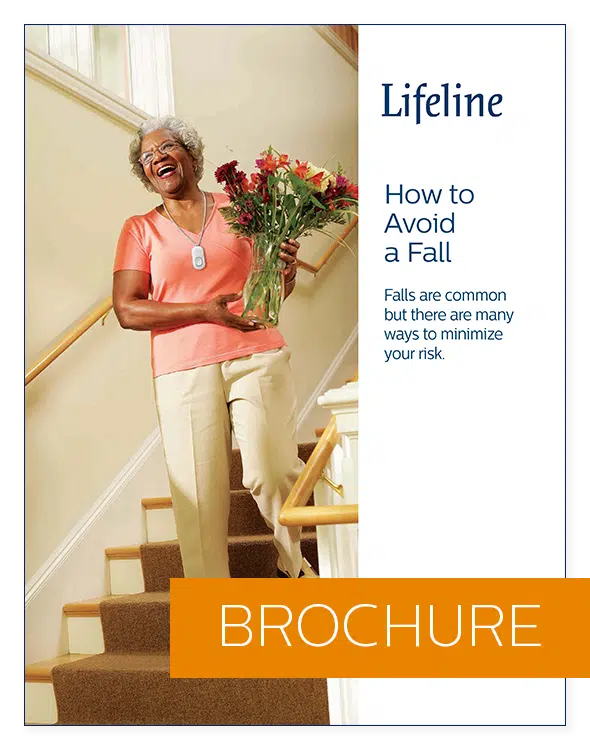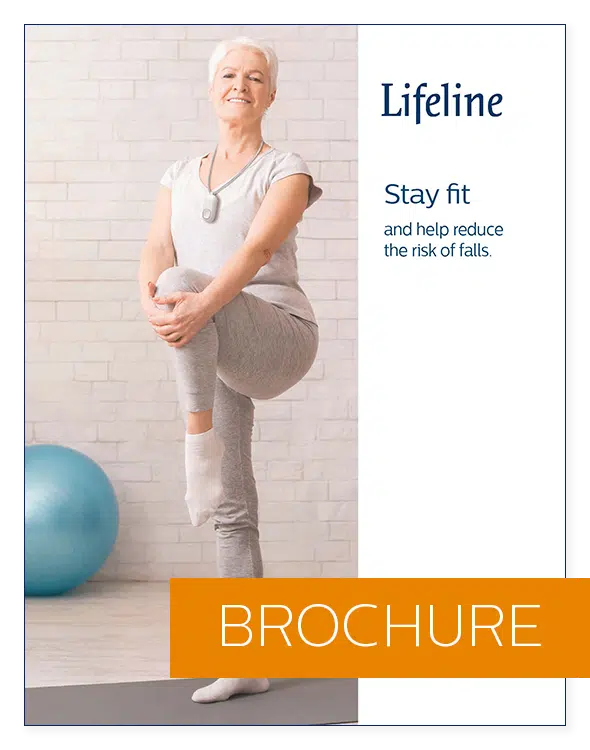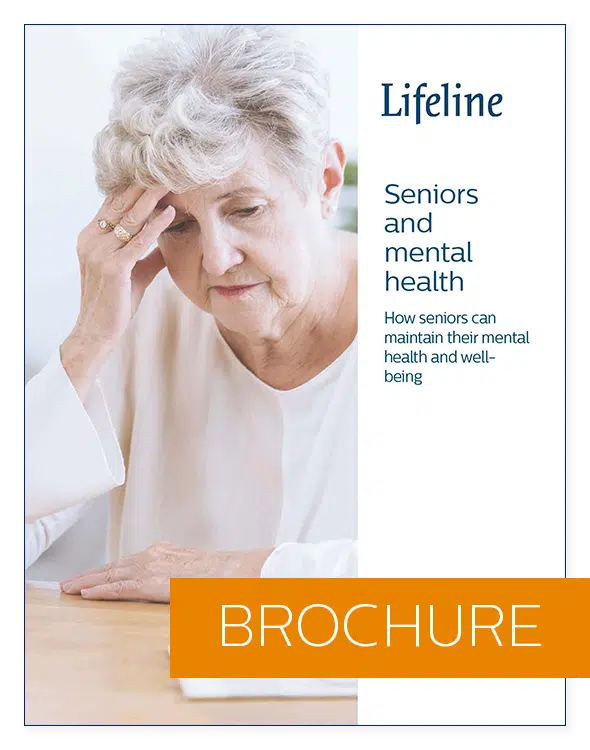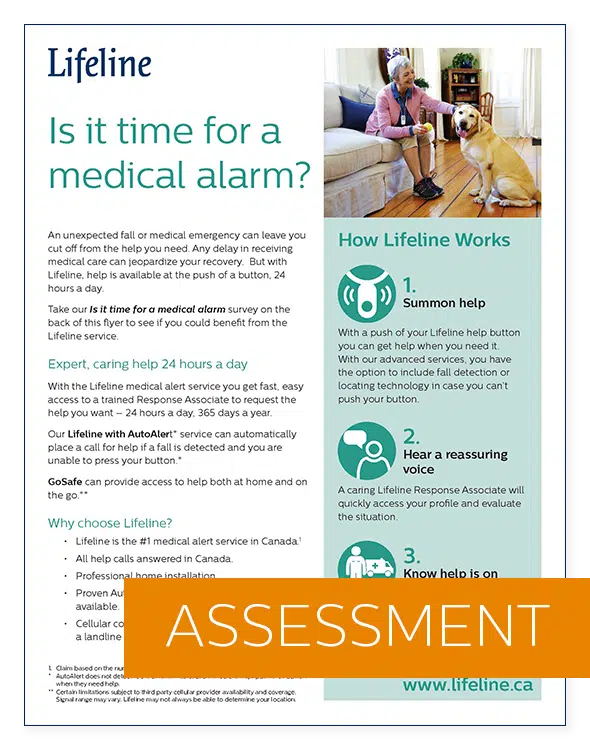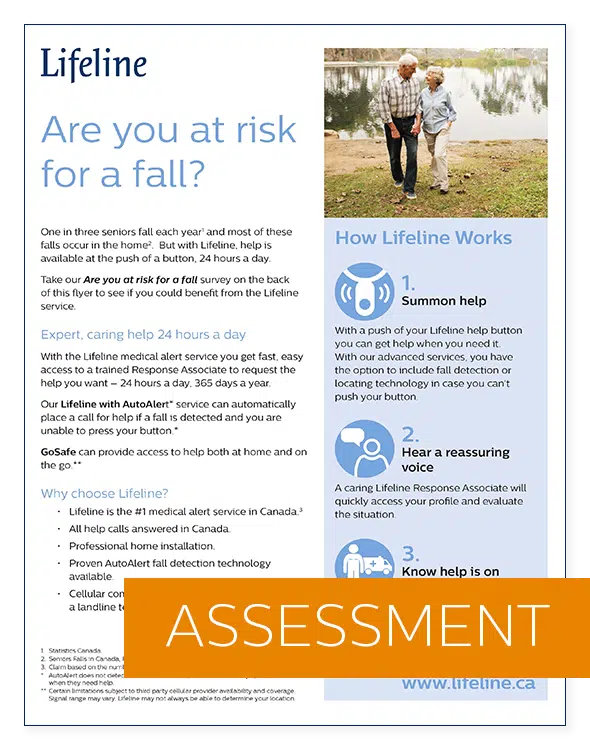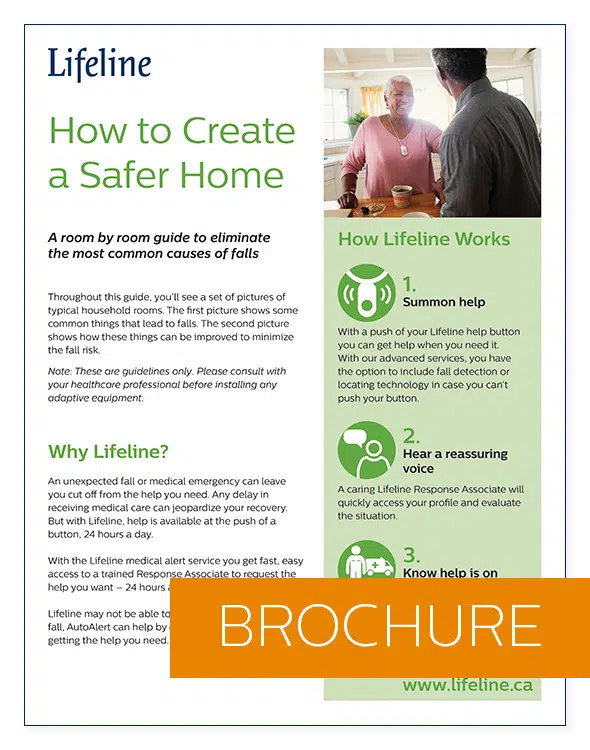Brochures and Publications for Healthcare Professionals
Get free tools designed to help you support the transition from hospital to home
Lifeline Educational Resources
Education is an important component to living a healthy and safe lifestyle. The following resources are available to download to help you support the safety and well-being of seniors and their caregivers.
How to avoid falls
Break the cycle of repeated falls by understanding the risks that lead to falling and how to get up from a fall if one does fall.
Stay fit and help reduce the risk of falls
Share some simple, senior-friendly exercises seniors can use to get fit, prevent falls and reduce the risk of injury in case a fall does happen.
Seniors and mental health
Help seniors maintain their mental health and well-being, understand their risk of mental health issues and how to get help
Is it time for a medical alarm survey
9 simple survey questions can help seniors assess their level of risk and the difference a medical alarm can make to their peace of mind and security.
Falls risk assessment survey
This simple self-assessment tool is designed to help seniors understand their level of risk for falling and the importance of having a fall prevention strategy.
How to get up from a fall
Ask your patients: If you fall tonight, how will you get up? Knowing the right way to get up from a fall can make the difference between “safe” and “sorry”. Even if your senior patients don’t have Lifeline, make sure they know how to get up safely from a fall by following the simple steps in this free educational tool
How to create a safer home
A room by room guide to eliminate the most common causes of falls. This guide provides before-and-after images to help seniors identify and remove fall hazards in the home, and includes advice on what to do if they happen to fall.
Staying Fit, Staying Safe
Simple senior-friendly exercises seniors can use to stay fit, prevent falls and reduce the severity of injuries if a fall does happen. Plus handy How to get up from a fall steps are included in case a fall does occur.
Lifeline information
This informative brochure will help educate seniors and their caregivers about the full range of Lifeline services available to help them maintain their independence with confidence and peace of mind.
